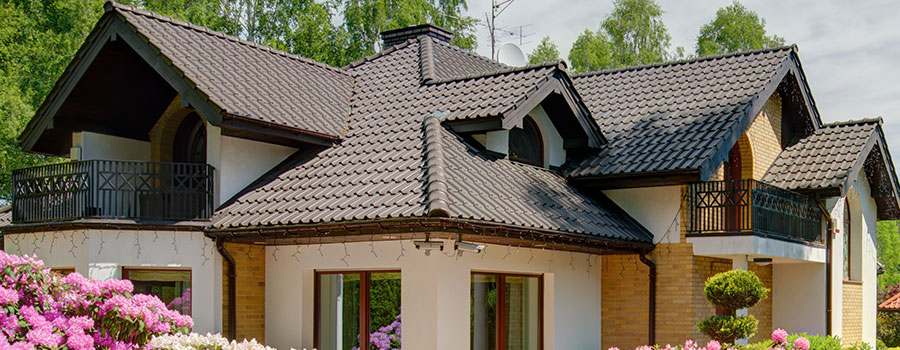
an Architectural Roofing Style Adds Refinement
When working with an architect on plans for your new home, you may not consider the roof to be anything more than a lid that protects your investment from weather damage. However, the roof is an integral structural element that is more than simply functional. Your choice of roofing style can enhance the beauty of your home. Certain types of roofs traditionally pair with specific architectural styles, but that doesn’t preclude experimentation. Consider the roofing types below when planning your new home, and contact your Marlton roofing contractor for practical advice.
A mansard roof is four-sided and double-sloped on all four sides. The lower slope is steeper than the upper one. The Louvre palace in Paris has mansard roof sections. The name of this architectural style comes from the French architect Francois Mansart, who did not create the style himself but used it often in his designs. One of the practical benefits of a mansard roof for your new home is the extra interior space it creates at the apex of the house.
The saltbox roofing style originated in colonial New England. Characterized by its unique asymmetric profile, the saltbox roof is a moderately pitched structure featuring one long side and one shorter side. It typically extends from one story to two. Despite its historic origins, the saltbox style has a contemporary look that coordinates well with simply designed, passive solar structures.
Side gable roofs incorporate extra, smaller additions that adjoin the peaked walls of a structure, mirroring their sloped design. For example, a side gable roof might top a vestibule or mudroom that leads into larger interior spaces.
Side gable roofs are typical of architectural styles such as Cape Cod, Georgian Revival and Colonial Revival.
A hip roof slopes from the ridgepole on all four sides of a rectangular structure. A variation of the mansard roof, the hip roof gives a building a formal, symmetrical appearance that can balance more adventurous design elements. Sometimes the hip roof incorporates dormers that expand the bedrooms situated just beneath. The signature roof of the American Foursquare architectural style, hip roofs are structurally strong and more impervious to wind damage than gable roofs.
A pyramid roof slopes from the point of the roof peak on all four sides of a square structure. A large home may incorporate pyramid roofs on sections of the structure for aesthetic impact. A smaller garage or gazebo might be roofed in the pyramid style.
Gambrel roofs are standard on Dutch Colonial homes and on many barns. This style is gently pitched at the top and more steeply pitched below, forming a profile that appears to curve. A gambrel roof features gable ends, and the sloped sides overhang the structure itself. This early American architectural style allows for open, livable interior spaces directly beneath.
Pairing a traditional roof with a non-traditional structural style can produce some exciting architectural results. By taking into account practical issues such as the suitability of a roof style to climactic conditions, you can select the look that works best for your region and your personal aesthetic. Have a question regarding roofing, shingles or new skylights? Please ask Fortified Roofing of Marlton NJ today!
Common term explained by Fortified Roofing of Marlton NJ:
Gable
A gable is the vertical, triangular wall section that spans the two slopes of a pitched roof. A simple home design might consist of a pair of gables at each end of a rectangular structure.
A Marlton roofing contractor answers a commonly asked question:
How should climate affect my choice of roof structures?
In windy regions, a roof without gables is a more structurally sound choice than one with gables that catch the wind. In a high snowfall area, a steeply pitched roof that sheds snow performs better than a flat roof. In sunny climates, a roof with a large surface expanse, such as a saltbox, better accommodates solar panels.

Rated 4.7 out of 5 stars based on 8 customer reviews.

Oh My! People say such nice things!
